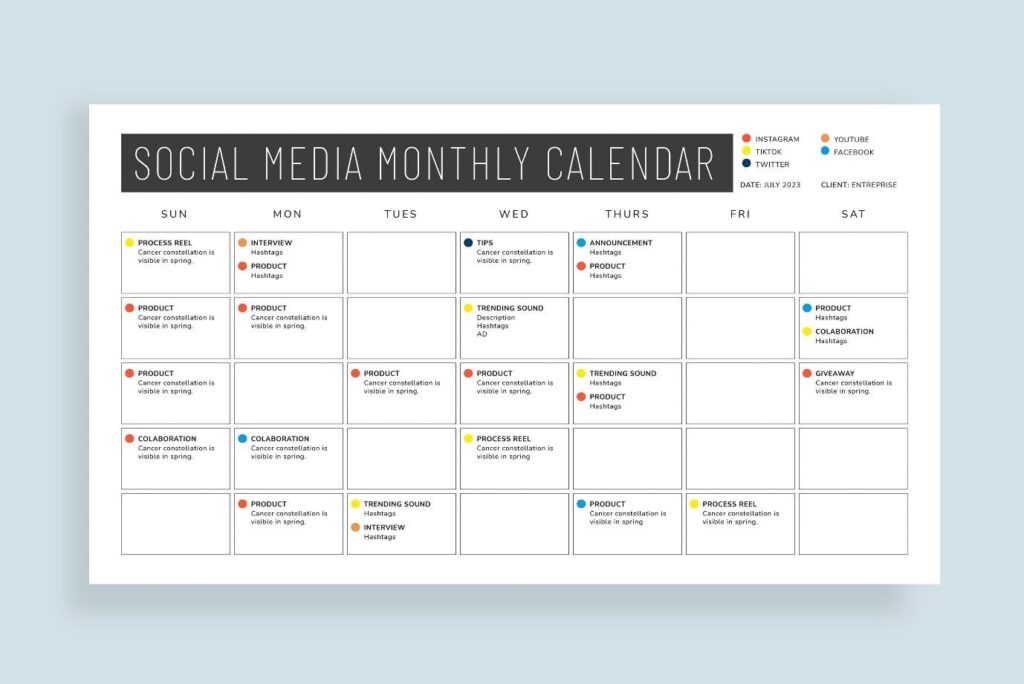
As a local business owner or marketing vertical, it is important to spend more of your efforts on creating and following a seasonal marketing calendar than just a conventional marketing strategy. It is important to realize that up to 73% small and medium retail businesses generate at least 25% of their annual revenue from holiday shopping. So, you simply cannot afford to ignore the importance of seasonal marketing.
What Makes Seasonal Marketing So Different?
Seasonal marketing is different from traditional marketing strategies in that it relies on predictable consumer behavior relevant to the times. When you create and implement a seasonal marketing calendar, you will be reaching your audience at the right time. This means they are most likely to show interest and purchase from you.
General marketing focuses on promoting your products or services all year round. Seasonal marketing involves adjusting your tactics based on the changing seasons, local events, and holidays. The focus here is to create and run campaigns that sync with the current occasion.
Marketing Calendars – An Overview

There is more to a seasonal marketing calendar than a schedule or timeline. It is a comprehensive strategic tool. It lays down the roadmap that coordinates your marketing actions for each campaign.
The calendars can be created for a quarter or an entire year. It is important to make them flexible to accommodate any changes that take place during the campaign. They can include different channels for running each campaign. You will always be focused on major local cultural events, including holidays, as well as weather changes that can affect your strategy.
A marketing calendar should provide you with campaign plans for not just every quarter, but every month, week, and day, all focused on helping you achieve your goals. It sets your campaign’s rhythm, as it outlines the target dates for creating content, publishing it, and promoting it.
Benefits of Creating Seasonal Marketing Calendars
When you follow a seasonal marketing calendar, your business will be better positioned to achieve your marketing goals more effectively and efficiently. Its importance emerges from a variety of benefits, including the following:
i. Strategic Alignment & Focus

Creating a calendar helps ensure that all promotional actions support your overall business goals and campaign-specific goals. It gives direction while keeping your team focused on decisive efforts. It helps prevent diversions that don’t make any contributions to your key business priorities. The result is that your marketing campaigns constantly drive desired results.
ii. Better Resource Allocation
A seasonal marketing calendar brings foresight into the upcoming actions that need to be taken. This helps enable a more efficient way to manage and distribute:
- Time
- Budget
- People
You and your teams will be better able to anticipate resource requirements and prevent bottlenecks. High-priority tasks will get the essential support they need, resulting in optimized spend and productivity.
iii. Better Organization & Visibility
The marketing calendar provides a centralized view of all planned actions, milestones, deadlines, and progress for different campaigns on different channels. The level of visibility provided by the calendar helps your team members in the following ways:
- Grasp the bigger picture
- Determine how each task makes its contribution
- Keep track of progress
There are no more scattered plans or different versions of schedules, thus eliminating any chances of confusion.
iv. Consistency

A seasonal marketing calendar enables you to coordinate your content themes, timing, and promotional efforts. This results in maintaining a consistent brand image and message across different channels. It further means no more disconnected or fragmented planning, diminished brand impact, and non-uniform customer experiences.
v. Reducing or Eliminating Risks
A calendar provides a holistic view of all your planned marketing steps. This can further help in avoiding the following potential issues:
- Running conflicting campaigns
- Creation of messaging gaps
- Duplicate content publishing
You can eliminate potential errors and retain brand reputation as your teams will be working from a single plan.
Additional benefits of creating a seasonal marketing calendar include improved communication and collaboration, proactive planning, and better adaptability.
Tips to Create Your Seasonal Marketing Calendar
Now that you realize the importance of creating a seasonal marketing calendar, it is important to know how to create one for your business. Here are 5 steps you should take to create a marketing calendar that helps you balance your ad spend across both busy and slow months.
1. Set Clear Goals
Every marketing campaign requires setting clear goals. You should take the following steps when planning your seasonal marketing calendar:
- Define the Goals: Set the goals you want to achieve through your seasonal marketing campaign. This can include growing sales or improving brand awareness.
- Identify KPIs: This can include parameters such as the number of website visits, social media interactions, conversion rate, and opened emails.
- Set Measurable Goals: Set measurable goals so that you can keep track of your campaign’s progress towards the set goals. For example, you can set a goal of increasing your sales by at least 15% during the festive season.
2. Create a Seasonal Marketing Plan
An effective plan will consist of different approaches and techniques to take your message to a wider range of audiences. You can take the following steps when creating the plan:
- Market Research: Conduct market research to find out what your target audience likes, purchases, and does at different times of the year.
- Create Content Strategy: Create a calendar that showcases the ideas, topics, and content you will be creating at different times of the year. This can include content types such as social media posts, blog posts, email newsletters, videos, and more.
- Ensure Team Collaboration: Creating a seasonal marketing calendar requires getting different teams involved. This includes customer service and sales teams, along with the marketing department.
- Plan the Budget: Next, you should plan and distribute the budget into different marketing activities and channels.
3. Use the Right Marketing Strategies

Digital marketing offers different tools and strategies. It is recommended to consider the following strategies when creating your seasonal marketing calendar:
Audience Segmentation
Segment your audience to customize your offers and brand messages for different groups based on their preferences and needs. This requires analyzing customer data, such as demographics, engagement patterns, and purchase history.
Social Media Promotion
This includes sharing posts related to holidays, using current hashtags, and holding contests. Instagram, Facebook, and X provide excellent live interaction and offer promotion opportunities.
Content Marketing
Create content for the season. This includes videos, blog posts, social media posts, and infographics. The content must match the current holiday or current time of the year, providing valuable info, entertainment, or recommendations.
Email Marketing
Leverage email list segmentation to send targeted campaigns based on customer interests and activities. Focus on special discounts, seasonal offers, and time pressure tactics to drive conversions.
Paid Ads
Use paid advertising to expand your audience base. It can also help you direct them to the special seasonal offers. Facebook Ads and Google Ads can help you target specific groups or interests.
Create a Sense of Urgency

A unique thing about seasonal marketing is that it drives engagement through urgency. It is recommended to create a sense of fear of missing out (FOMO) to encourage your prospects to take action. For example, you can create a sense of scarcity through:
- Countdown timers on your company’s website
- In-store exclusives
- Limited-period offers
Creating a seasonal marketing calendar requires careful planning and organization. A well-planned calendar can move your marketing strategy from fragmented and uncoordinated efforts to a cohesive and efficient campaign. Proper planning can ensure effective resource allocation and consistency in branding and messaging.
If you want to create highly effective marketing campaigns to target your local market, Clear Imaging, Inc. can help. For more information about our services, feel free to contact us at (800) 380-6942 or write to us.
- View our Website Plans
- View our Marketing Plans
- View our Website Gallery






